Navigating the world of international trade can be complex, particularly when it comes to shipping goods from China to the Democratic Republic of the Congo (DRC). Sea freight emerges as a preferred solution for many businesses, offering a cost-effective and efficient means to transport large volumes of goods across vast distances. In this comprehensive guide, we will explore the ins and outs of sea freight, covering everything from the fundamental advantages of this shipping method to essential considerations for successful importing. From understanding the logistics involved to examining the specific requirements and costs associated with shipping, this guide will equip you with the knowledge needed to effectively manage your sea freight operations. Whether you’re a seasoned trader or just starting, this step-by-step process will help streamline your journey to successfully importing goods from China to the DRC.
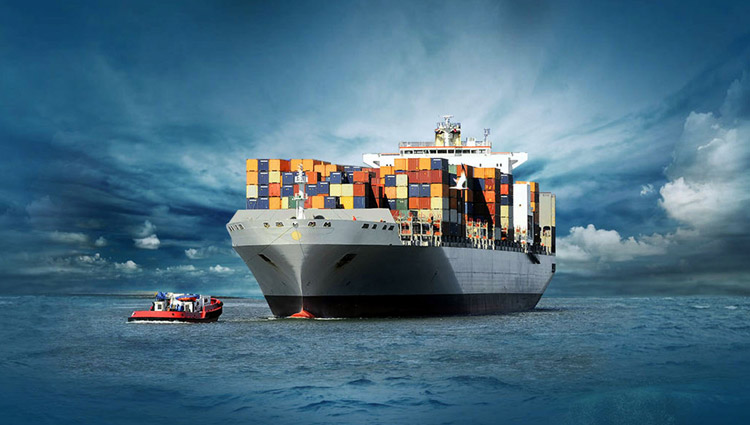
Table of Contents
Understanding Sea Freight
Sea freight refers to the transportation of goods and cargo via maritime transport, utilizing large cargo ships to move goods across oceans and seas. It is one of the primary modes of international shipping, particularly for bulk goods and large shipments. Choosing sea freight is often dictated by several factors, including cost, cargo volume, and transit time.
Advantages of Choosing Sea Freight
-
Cost-Effectiveness: Sea freight is generally more economical for large shipments compared to air freight. The cost per unit decreases significantly when shipping in bulk, making it ideal for businesses looking to maximize profit margins.
-
Capacity: Cargo ships have a vast capacity, allowing for the transportation of large volumes of goods in one shipment. This is especially beneficial for businesses importing from China, where bulk orders are common.
-
Environmental Impact: Shipping by sea tends to be more environmentally friendly than other modes of transport, such as air freight. Ships produce less CO2 per ton of cargo transported and can be a more sustainable option for businesses aiming to reduce their carbon footprint.
-
Diverse Cargo Handling: Sea freight is capable of transporting a wide variety of goods, including heavy machinery, raw materials, and consumer products. Containers can also be customized to meet specific shipping requirements, such as refrigeration for perishable items.
-
Flexibility in Shipping Routes: Shipping via sea allows access to numerous international ports, providing flexibility in choosing the most efficient route for various destinations.
Key Considerations for Shipping from China to Democratic Republic of the Congo
When considering shipping from China to the Democratic Republic of the Congo (DRC), it is essential to understand several key factors that can impact the efficiency and success of the operation.
Shipping Methods
There are two primary shipping methods when engaging in sea freight:
-
Full Container Load (FCL): This method is ideal for businesses that have a large volume of goods to transport. An entire container is dedicated to a single shipment, ensuring that goods are shipped together and minimizing the risk of damage.
-
Less Than Container Load (LCL): For smaller shipments, LCL allows multiple shippers to share a container. This method can be more cost-effective for businesses with lower shipping volumes, although it may require longer transit times due to additional handling.
Shipping Routes
Understanding the best shipping routes is essential for minimizing transit times and costs. Key shipping routes from China to the DRC typically involve:
- Port of Shanghai to Port of Matadi: The most common route, often utilized for its established shipping lanes.
- Port of Shenzhen to Port of Boma: Another viable option, providing alternative access to the DRC’s coastline.
Required Documents
Shipping to the DRC from China requires specific documentation to ensure compliance with customs regulations. Essential documents include:
- Commercial Invoice: A detailed list of items being shipped, including quantities and values.
- Packing List: Outlines how items are packed and organized within the container.
- Bill of Lading: A contract between the shipper and the carrier, detailing the shipment’s journey.
- Certificate of Origin: Confirms where the goods originated, which may affect tariffs and fees.
Customs Clearance
Efficient customs clearance is vital for ensuring that goods can enter the DRC without delays. Considerations include:
- Customs Duties and Taxes: Be prepared to pay applicable duties and taxes, which can vary based on the product category.
- Compliance with Local Regulations: Adherence to DRC’s import regulations is essential to avoid penalties or seizure of goods.
- Use of a Freight Forwarder: Engaging a professional freight forwarder, such as Dantful International Logistics, can simplify the customs clearance process, ensuring that all documentation is correctly prepared and submitted.
In conclusion, leveraging sea freight for importing goods from China to the Democratic Republic of the Congo presents numerous advantages. Considering shipping methods, routes, required documentation, and customs clearance can streamline the process and ensure successful international trade. For a comprehensive solution tailored to your needs, consider partnering with Dantful International Logistics, which offers a highly professional, cost-effective, and high-quality one-stop international logistics service for global traders.
READ MORE:
- Shipping From China To Algeria
- Shipping From China To Angola
- Shipping From China To Morocco
- Shipping From China To Nigeria
- Shipping From China To Kenya
- Shipping From China To Tanzania
- Shipping From China To South Africa
Major Ports for Sea Freight
Top Chinese Ports for Exporting to Democratic Republic of the Congo
China, as a major global manufacturing hub, is home to several significant ports that facilitate the export of goods to international markets, including the Democratic Republic of the Congo (DRC). The following are the top Chinese ports for exporting to the DRC:
| Port | Location | Description |
|---|---|---|
| Port of Shanghai | Shanghai | As one of the largest ports in the world, Shanghai handles a massive volume of cargo, offering extensive shipping routes to Africa, including the DRC. |
| Port of Shenzhen | Guangdong | Known for its proximity to major manufacturing centers, Shenzhen is crucial for exporting electronics and consumer goods. |
| Port of Ningbo | Zhejiang | This port is well connected and offers competitive shipping rates, making it a popular choice for exporters. |
| Port of Guangzhou | Guangdong | The Port of Guangzhou is strategically located and serves multiple shipping lines, providing flexibility in shipping options. |
| Port of Tianjin | Tianjin | As a major northern port, Tianjin connects to various international routes, facilitating access to the DRC and surrounding regions. |
Key Democratic Republic of the Congo Ports for Imports
The Democratic Republic of the Congo has several major ports that handle the influx of imported goods. Understanding these ports is vital for ensuring efficient logistics and distribution:
| Port | Location | Description |
|---|---|---|
| Port of Matadi | Near Kinshasa | The primary seaport of the DRC, Matadi handles a significant portion of cargo destined for Kinshasa and the surrounding areas. |
| Port of Boma | Near Matadi | This port is essential for receiving bulk cargo and has facilities to accommodate various types of shipments. |
| Port of Banana | Near the mouth of the Congo River | Banana serves as a secondary port, primarily for agricultural products and bulk commodities. |
| Port of Kinshasa | Kinshasa | Although not a traditional seaport, it is vital for trade, serving as a key distribution hub for goods reaching the capital. |
The Sea Freight Shipping Process Step-by-Step
Navigating the sea freight shipping process from China to the Democratic Republic of the Congo involves several key steps. Understanding this process can help businesses streamline operations and ensure successful cargo delivery.
1. Obtaining a Freight Quote and Booking
-
Providing Shipment Details to the Freight Forwarder: The first step is to contact a reputable freight forwarder, such as Dantful International Logistics, and provide comprehensive details about the shipment. This includes dimensions, weight, type of goods, and the origin and destination ports.
-
Agreeing on Shipping Terms and Rates: After reviewing the shipment details, the freight forwarder will provide a quote, outlining the shipping costs, transit times, and terms of service. It is essential to clarify any additional charges, such as loading or unloading fees.
-
Confirming the Booking: Once both parties agree on the quote, the shipment can be officially booked. The freight forwarder will issue a booking confirmation, which serves as proof of the arrangement.
2. Cargo Pick-Up and Delivery to the Port
-
Arranging for Cargo Pick-Up from the Supplier: The freight forwarder coordinates with the supplier in China to arrange for the collection of the goods.
-
Transporting the Goods to the Port of Departure in China: Once picked up, the cargo is transported to the designated port, ensuring timely delivery for loading onto the vessel.
3. Export Customs Clearance in China
-
Submitting Required Documents: The freight forwarder prepares and submits necessary documentation, including the commercial invoice, packing list, and bill of lading, to Chinese customs.
-
Paying Export Duties and Taxes: Depending on the nature of the goods, applicable export duties or taxes must be settled before shipment can proceed.
4. Loading and Ocean Transportation
-
Loading the Cargo onto the Vessel: After clearance, the cargo is loaded onto the vessel. Proper handling is crucial to minimize the risk of damage during transit.
-
Transit Time from China to Democratic Republic of the Congo: The transit time can vary based on the specific route taken, shipping method, and potential delays. Typically, shipments can take anywhere from 30 to 45 days.
5. Import Customs Clearance in Democratic Republic of the Congo
-
Submitting Import Documents: Upon arrival at the port in the DRC, the freight forwarder submits the required import documentation to local customs authorities.
-
Paying Import Duties and Taxes: Businesses must be prepared to pay any applicable import duties and taxes, which can significantly vary depending on the type of goods being imported.
6. Cargo Unloading and Delivery to the Final Destination
-
Unloading the Cargo at the Port of Arrival in Democratic Republic of the Congo: Once customs clearance is complete, the cargo is unloaded at the port.
-
Arranging for Final Delivery to Your Warehouse or Facility: The freight forwarder can assist in coordinating the final delivery of goods to the buyer’s warehouse or facility, ensuring a smooth transition from port to destination.
Each step in the sea freight shipping process is crucial to achieving a successful import operation. Partnering with a reliable freight forwarder like Dantful International Logistics can enhance the efficiency of this process, ensuring timely delivery and compliance with all regulations.
You may be interested in the following related articles:
- Shipping From China To Burundi
- Shipping From China To Sierra Leone
- Shipping From China To Rwanda
- Shipping From China To Benin
- Shipping From China To Chad
Shipping Costs from China to Democratic Republic of the Congo by Sea Freight
Breakdown of Sea Freight Costs
Understanding the breakdown of sea freight costs is crucial for businesses looking to manage their shipping budgets effectively. Several components contribute to the total cost of shipping goods from China to the Democratic Republic of the Congo (DRC):
| Cost Component | Description |
|---|---|
| Freight Charges | The basic cost associated with transporting cargo from the origin port in China to the destination port in the DRC. This charge varies based on the shipping method (FCL or LCL), distance, and current market rates. |
| Port Handling Fees | Charges incurred for loading and unloading cargo at the ports. This can include terminal fees, stevedoring fees, and other handling costs. |
| Documentation Fees | Costs associated with preparing and processing necessary shipping documents, such as bills of lading and customs paperwork. |
| Customs Duties and Taxes | Tariffs imposed by the DRC government on imported goods. The rates vary depending on the type of product being imported, and it is essential to research the applicable duties for your cargo. |
| Insurance Costs | Optional, but recommended, cargo insurance to protect against loss or damage during transit. Costs depend on the value of the goods being shipped. |
| Delivery Fees | Expenses related to transporting goods from the port to the final destination, including local delivery charges. This can vary based on distance and transportation method. |
Understanding these components allows businesses to better anticipate and manage their shipping expenses effectively.
Tips for Reducing Shipping Expenses
Businesses can implement several strategies to minimize shipping costs when importing goods from China to the Democratic Republic of the Congo:
-
Optimize Shipping Method: Consider using Full Container Load (FCL) shipping if your cargo volume justifies it. FCL generally offers a lower cost per unit compared to Less than Container Load (LCL), particularly for larger shipments.
-
Negotiate with Freight Forwarders: Engage with multiple freight forwarders to compare quotes and negotiate better rates. Establishing a long-term relationship with a freight forwarder can also yield discounts over time.
-
Consolidate Shipments: If feasible, consolidate multiple smaller shipments into one larger shipment. This not only lowers shipping costs but can also reduce handling fees and lead to better overall efficiency.
-
Choose Off-Peak Shipping Times: Shipping during off-peak seasons may provide reduced rates as demand is lower. Additionally, booking well in advance can also secure better prices.
-
Consider Insurance Carefully: While insurance is essential for protecting high-value goods, review the coverage options carefully. Avoid over-insuring unless necessary, as this can inflate total shipping costs.
-
Review Documentation Requirements: Ensure that all documentation is accurate and complete to avoid delays and additional fees associated with customs clearance.
Shipping Times from China to Democratic Republic of the Congo by Sea Freight
Port-to-Port Delivery
Typical Transit Times for Major Port Pairs
Transit times for sea freight can vary significantly based on the specific ports involved and shipping conditions. Below are typical transit times between major port pairs for shipments from China to the Democratic Republic of the Congo:
| Port of Departure | Port of Arrival | Typical Transit Time |
|---|---|---|
| Port of Shanghai | Port of Matadi | 30-35 days |
| Port of Shenzhen | Port of Boma | 28-32 days |
| Port of Ningbo | Port of Matadi | 30-36 days |
| Port of Guangzhou | Port of Boma | 29-34 days |
Factors Affecting Port-to-Port Delivery Times
Several factors can impact the delivery times of sea freight shipments:
-
Weather Conditions: Severe weather can disrupt shipping schedules, leading to delays at sea or in port.
-
Port Congestion: High volumes of incoming and outgoing cargo can result in congestion, affecting loading and unloading times.
-
Shipping Line Schedules: Different shipping lines operate on varying schedules. Frequency and reliability can influence the overall transit time.
-
Customs Clearance: Delays in customs processing at either the port of departure or arrival can significantly affect the total delivery time. Ensuring that all documentation is accurate can help mitigate this risk.
-
Route Changes: Occasionally, shipping routes may be altered due to geopolitical factors, trade restrictions, or logistical issues, which can affect transit times.
Door-to-Door Delivery
Door-to-Door delivery is a service that encompasses the entire logistics process, from pick-up at the supplier’s location in China to delivery at the final destination in the DRC. This service often includes comprehensive management of customs clearance and all transportation stages.
Timelines for Door-to-Door Delivery
The typical timeline for door-to-door delivery can vary based on multiple factors, including:
- Total Distance: The location of the final destination within the DRC can affect the overall delivery time.
- Customs Clearance: Efficient customs clearance procedures can expedite delivery, while complications can result in significant delays.
- Transport Modes: Depending on the distance from the port to the final destination, different modes of transportation (truck, rail) may be used, impacting delivery times.
Door-to-door shipping generally adds an additional 5-10 days to the overall transit time compared to port-to-port delivery, depending on the location of the delivery point and the efficiency of local logistics services.
Utilizing services from a reputable freight forwarder like Dantful International Logistics can enhance the door-to-door shipping experience, ensuring that goods are delivered efficiently and on time, with full support throughout the logistics process.

Young Chiu is a seasoned logistics expert with over 15 years of experience in international freight forwarding and supply chain management. As CEO of Dantful International Logistics, Young is dedicated to providing valuable insights and practical advice to businesses navigating the complexities of global shipping.

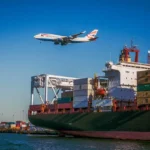
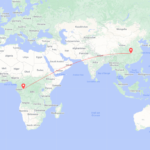
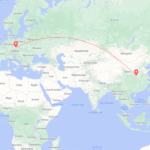
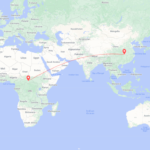






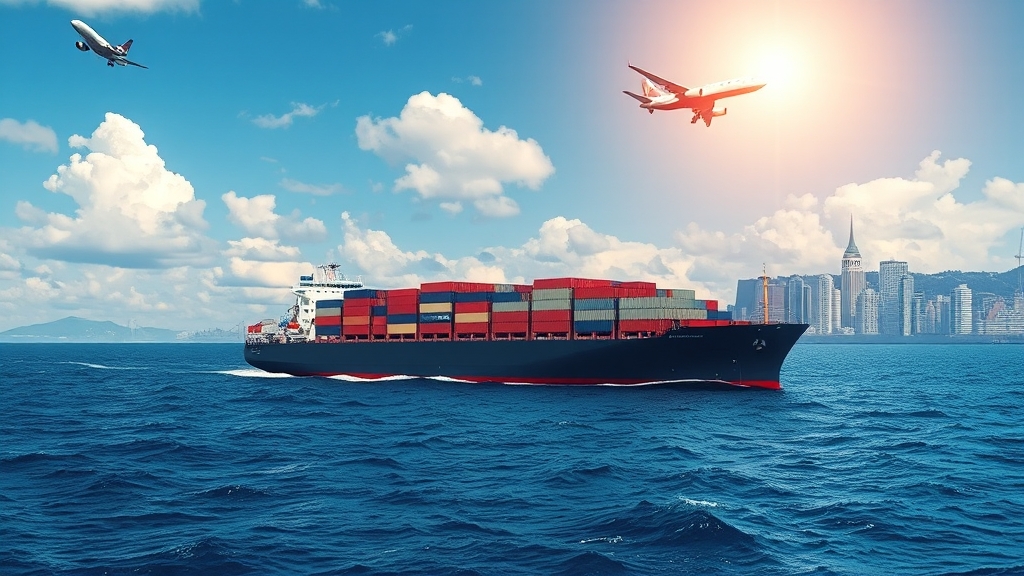

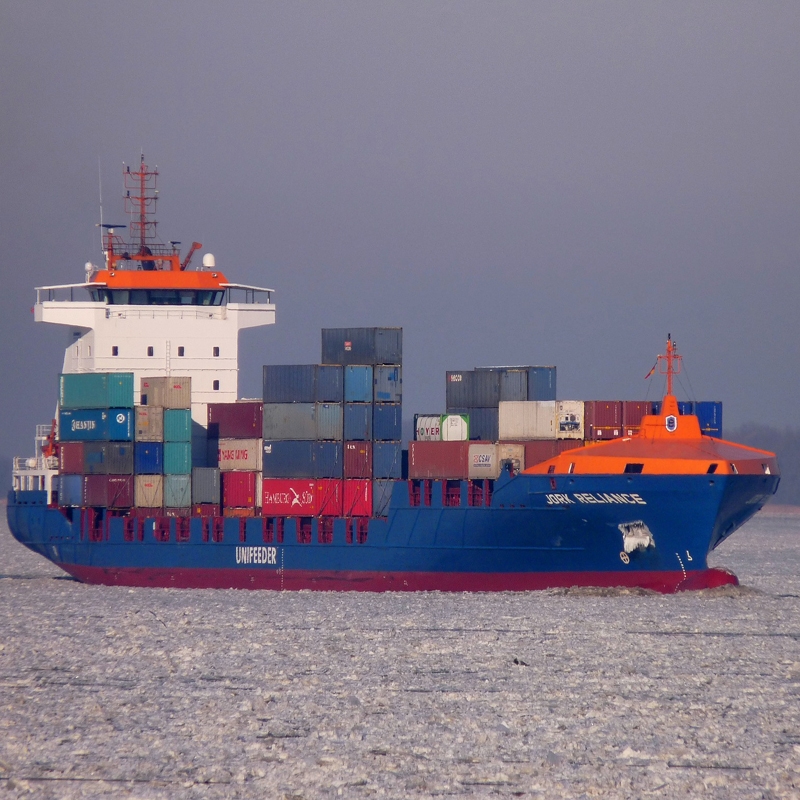
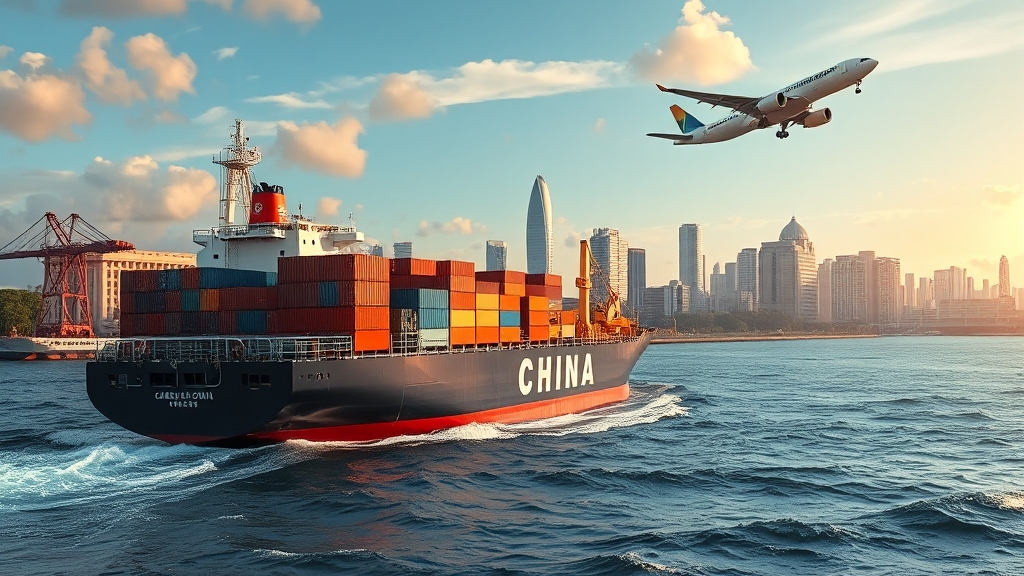
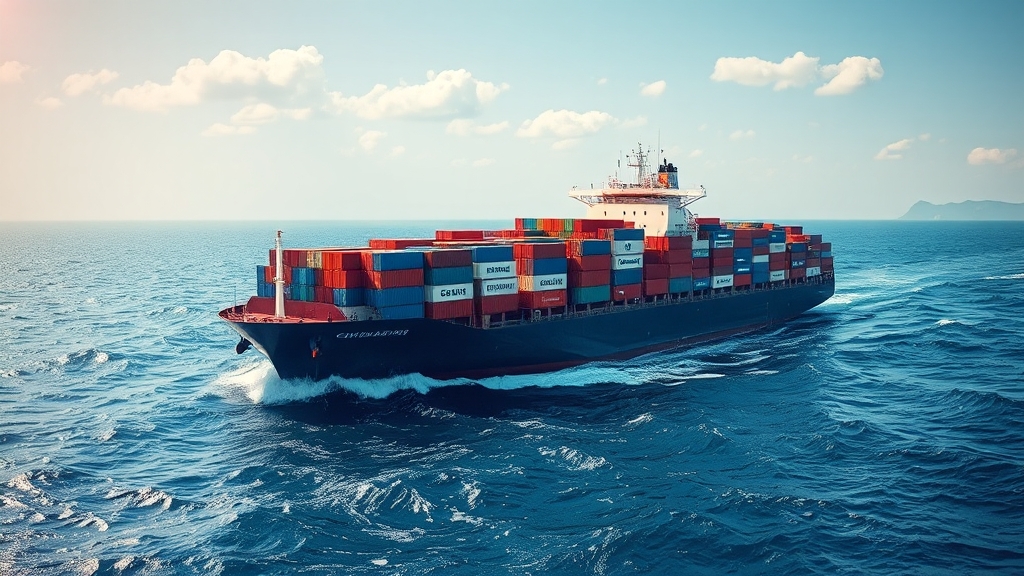





 Afrikaans
Afrikaans Shqip
Shqip አማርኛ
አማርኛ العربية
العربية Հայերեն
Հայերեն Azərbaycan dili
Azərbaycan dili Euskara
Euskara Беларуская мова
Беларуская мова বাংলা
বাংলা Bosanski
Bosanski Български
Български Català
Català Cebuano
Cebuano Chichewa
Chichewa 简体中文
简体中文 繁體中文
繁體中文 Corsu
Corsu Hrvatski
Hrvatski Čeština
Čeština Dansk
Dansk Nederlands
Nederlands English
English Esperanto
Esperanto Eesti
Eesti Filipino
Filipino Suomi
Suomi Français
Français Galego
Galego ქართული
ქართული Deutsch
Deutsch Ελληνικά
Ελληνικά Kreyol ayisyen
Kreyol ayisyen Harshen Hausa
Harshen Hausa Ōlelo Hawaiʻi
Ōlelo Hawaiʻi עִבְרִית
עִבְרִית हिन्दी
हिन्दी Hmong
Hmong Magyar
Magyar Íslenska
Íslenska Igbo
Igbo Bahasa Indonesia
Bahasa Indonesia Gaeilge
Gaeilge Italiano
Italiano 日本語
日本語 Basa Jawa
Basa Jawa ಕನ್ನಡ
ಕನ್ನಡ Қазақ тілі
Қазақ тілі ភាសាខ្មែរ
ភាសាខ្មែរ 한국어
한국어 كوردی
كوردی Кыргызча
Кыргызча ພາສາລາວ
ພາສາລາວ Latin
Latin Latviešu valoda
Latviešu valoda Lietuvių kalba
Lietuvių kalba Lëtzebuergesch
Lëtzebuergesch Македонски јазик
Македонски јазик Malagasy
Malagasy Bahasa Melayu
Bahasa Melayu മലയാളം
മലയാളം Maltese
Maltese Te Reo Māori
Te Reo Māori मराठी
मराठी Монгол
Монгол ဗမာစာ
ဗမာစာ नेपाली
नेपाली Norsk bokmål
Norsk bokmål پښتو
پښتو فارسی
فارسی Polski
Polski Português
Português ਪੰਜਾਬੀ
ਪੰਜਾਬੀ Română
Română Русский
Русский Samoan
Samoan Gàidhlig
Gàidhlig Српски језик
Српски језик Sesotho
Sesotho Shona
Shona سنڌي
سنڌي සිංහල
සිංහල Slovenčina
Slovenčina Slovenščina
Slovenščina Afsoomaali
Afsoomaali Español
Español Basa Sunda
Basa Sunda Kiswahili
Kiswahili Svenska
Svenska Тоҷикӣ
Тоҷикӣ தமிழ்
தமிழ் తెలుగు
తెలుగు ไทย
ไทย Türkçe
Türkçe Українська
Українська اردو
اردو O‘zbekcha
O‘zbekcha Tiếng Việt
Tiếng Việt Cymraeg
Cymraeg יידיש
יידיש Yorùbá
Yorùbá Zulu
Zulu